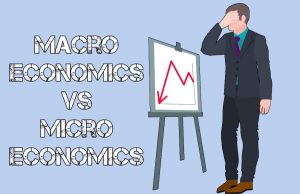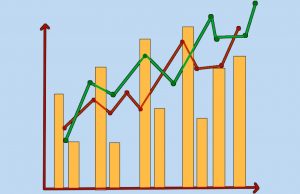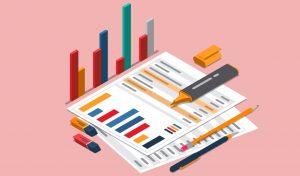Meaning And Differences Between Microeconomics And Macroeconomics: According to the definition of economics, it is the study of how people cooperate to turn scarce resources into commodities and services that can satisfy their limitless demands and how they share those goods and services among one another. Microeconomics and macroeconomics are two big categories that make up economics.
The concept and all the significant distinctions between microeconomics and macroeconomics have been delineated in the following article. Take a look.

Recommended: Major tools for economic analysis you should know
Meaning of Micro Economics
Microeconomics focuses on people’s and companies’ decisions about resource allocation and pricing of products, goods and services. The tax regulations are determined by the government. Microeconomics is concerned with the supply of goods and services, which influences the country’s economic price level. It examines the economy from the bottom up.
Microeconomics, in other respects, seeks to comprehend human decision-making and resource allocation. It does not determine what variation exists in the market; rather, it analyses why those changes are taking place.

The primary aim of microeconomics is to investigate how a firm may maximize its production and capacity in a bid to minimize prices and thrive in its industry. The financial accounts include a wealth of information on microeconomics.
Also see: Differences between growth and development
Microeconomics covers several essential principles that are used to explain how firms make choices and how markets work. They are;
a. Incentives and behaviour: Microeconomics examine how people, whether as individuals or as businesses, respond to different conditions with which they are presented.
b. Utility theory: This concept explains why people behave the way they do. It states that customers will choose the combinations of products and services that provide them with the most satisfaction or utility. However, they are limited by the amount of money they have available to spend.
c. Production theory: Production theory is the study of manufacturing or the process of transforming inputs into outputs. Producers seek choices that allow them to select a set of inputs as well as strategies for combining them to reduce costs and maximize profit.
d. Price theory: The theory of supply and demand, which is used to establish prices in a competitive market, is created by combining utility and production theory. It concludes that in a completely competitive market, the price requested by consumers is the same as the price offered by producers. As a consequence, economic equilibrium is achieved.

Recommended: Advantages and Disadvantages of shopping online
Meaning Of Macro Economics
Macroeconomics is a discipline of economics that provides a comprehensive view. It examines the economy on a huge scale, taking into account a variety of economic difficulties. Macroeconomics measures and interprets the difficulties that an economy faces, as well as the progress that it achieves. Macroeconomics studies the relationship between countries and how one country’s actions affect the other. It defines its scope by analysing the success and failure of government efforts.
In macroeconomics, we usually investigate the relationship between the nation’s total manufacturing and the degree of employment with particular characteristics such as cost prices, wage rates, interest rates, profits, and so on, by focusing on a single hypothetical commodity and what happens to it.
Macroeconomics deals with a variety of issues relating to an economy’s long-term growth, such as: What causes unemployment? What is the source of inflation? What are the variables that help or hinder economic growth?

There are many different sorts of macroeconomics components that try to figure out how to define economic policy goals and strive toward economic development. These are the following:
a. Positive factors: These are occurrences that eventually promote economic stability and growth inside a country or within a group of countries. A positive macroeconomic factor is defined as any development that increases demand for products or services.
b. Negative factors: These are occurrences that might put the national or global economy in jeopardy. Global pandemics (e.g., Covid-19) and natural catastrophes such as hurricanes, earthquakes, and floods are examples of these causes.
Also see: Arms and functions of the arms of government
c. Neutral: A few economic developments are neither favourable nor unfavourable. Rather, the effects of their actions, such as trade restrictions across regional or national boundaries, are determined by the goal of the action. The repercussions of such activities are determined by the nation impacted and the goal of the action.
Given the massive magnitude of government budgets and the impact of monetary policy on consumers and businesses, macroeconomics is understandably concerned with major concerns. Financial speculations, when used correctly, may provide useful information on how economies work and the long-term consequences of certain tactics and decisions.
Recommended: Arts vs Science, Which is Better to study? Answered
Key Differences Between Microeconomics and Macroeconomics Explained
1. Meaning: The area of economics known as microeconomics focuses on the analysis of how people, households, and businesses make decisions and distribute resources. It covers economic topics and has markets for products and services. The area of economics known as macroeconomics focuses on the examination of the operation and behavior of the economy as a whole.

The gross domestic product (GDP), unemployment, inflation, growth rate, and other essential macroeconomic variables are among the most crucial ones to be studied.
Also see: Best laptops for college students
2. Relevance: Microeconomics is crucial because it enables people to comprehend how organizations and individuals influence how different communities’ finances develop. Microeconomics, which emphasizes relationships between those individual agents, can assist a business in boosting production efficiency and developing rules that directly impact the lives of its employees or clients.

It can also enable someone to see themselves as routinely contributing members of their community’s economy. Microeconomics could be used by a business, for instance, to remedy a disparity between the price of a product and the daily wage of an employee. Macroeconomics is crucial because it enables scholars to look at the main factors influencing how the world economy works. Researchers may address social problems like housing and employment on a bigger scale by using macroeconomics to understand why goods and services are valued differently in different governmental policies. Additionally, it assists them in developing plans to increase and sustain the global gross domestic product (GDP), which measures the total amount of goods and services a country offers each year.
Recommended: Most Technologically Advanced Countries in the World
3. Functionality: Microeconomics is primarily concerned with individual economic players’ decisions (such as people, households, industries, etc.). Macroeconomics, on the other contrary, is concerned with the overall operation, structure, and behaviour of the economy.
4. Decision Making: These two economic branches have a big influence on how people make decisions. Microeconomics studies individual and corporate decisions on resource allocation and usage. It also monitors the prices at which people sell their goods and services, taking into account taxes, restrictions, and government laws.
Contrarily, Macroeconomics is the study of government actions and the effects of those decisions on the overall economy. Macroeconomics looks at whole sectors and economies rather than individual or corporate actions. It aims to answer problems like “What should the inflation rate be?” and “What should the pace of inflation be?” or “What causes economic growth?”.
Recommended: Meaning and Differences Between Morals and ethics
5. Price Levels: Microeconomics is concerned with supply and demand, as well as other variables that influence price levels. Microeconomics, in other terms, seeks to comprehend human choices, decisions, and resource allocation. Microeconomics aims to describe the influence of particular changes in market circumstances rather than suggesting, answering, and explaining what forces should occur in a market.
Macroeconomics examines how factors such as unemployment, national income, and goods pricing affect the broader economy. It investigates overall employment in the economy, as well as aggregates and economic relationships. This is why government agencies rely on macroeconomics to help them formulate economic and fiscal policy.
6. Market scenario: Microeconomics studies the behaviour of individual markets. It examines how the firm may increase its production and capacity to reduce the cost of goods or services. This aids the business in properly positioning itself and surviving the harsh competition. Macroeconomics, on the contrary, studies the overall state of the economy. It examines the elements that influence the whole economy, along with the gross domestic product (GDP).
It investigates how a country’s capital account is affected by an increase or reduction in net exports. It examines worldwide topics including inflation, unemployment, and economic growth. Macroeconomics offers extensive insight to aid the government in establishing economic policies.
Also see: Most profitable skills to learn in 2021
7. Approach: Microeconomics analyses the economy from the bottom up, whereas macroeconomics does it from the top down.
8. Relevance to Investors: Microeconomics is often studied in depth by investors to get useful insights for making investment decisions. In general, seasoned investors pay less attention to macroeconomics when making investing decisions.
9. Limitations: Microeconomics is founded on unrealistic assumptions, such as the assumption of full employment in society, which is impossible to achieve. Macroeconomics has been scrutinized to see if it includes the ‘misconception of composition,’ which sometimes fails to show correct since what is true for the aggregate (comprehensive) may not be true for individuals.
Recommended: Best countries to do business in Africa
Conclusion
Microeconomics and macroeconomics are complementary rather than being opposing concepts or disciplines. Every coin has two sides, and micro and macroeconomics are the two sides of the same coin. One’s merit is another’s detriment, and this way, they cover the entire economy. Their area of application is the sole significant distinction. While macroeconomics analyzes how scarce resources should be distributed among many people to make the best use of them, microeconomics focuses on how scarce resources should be distributed among individuals. While macroeconomics focuses on the aggregate variables, microeconomics is concerned with the study of the individual units.
They both believe that the best possible use of the nation’s productive resources is the only way to ensure its economic welfare. We can infer their interdependence in this way. Additionally, studying all of the two branches of economics is important for a complete comprehension of the subject.

Edeh Samuel Chukwuemeka, ACMC, is a lawyer and a certified mediator/conciliator in Nigeria. He is also a developer with knowledge in various programming languages. Samuel is determined to leverage his skills in technology, SEO, and legal practice to revolutionize the legal profession worldwide by creating web and mobile applications that simplify legal research. Sam is also passionate about educating and providing valuable information to people.